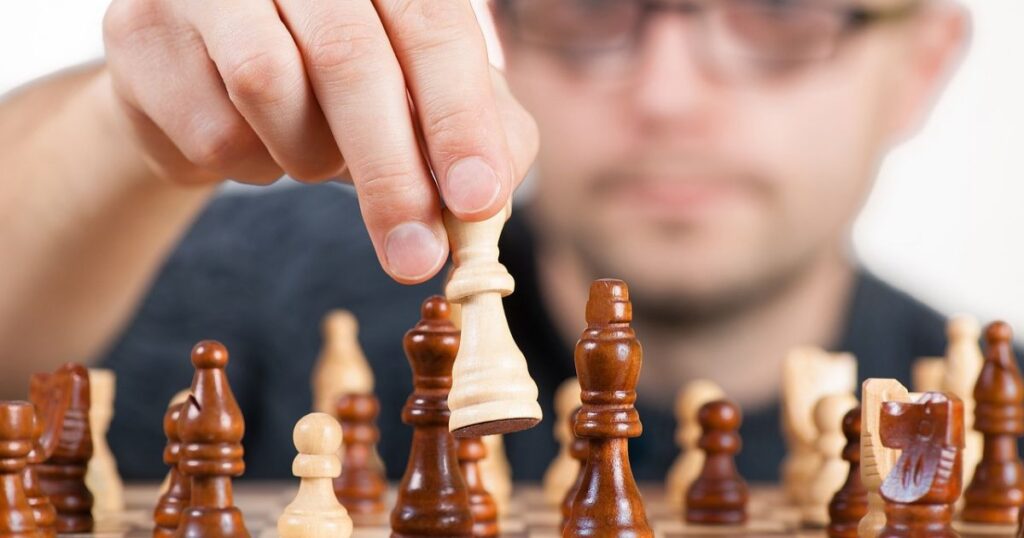Games and sports have a lot in common – they’re both fun, challenging activities that bring people together through competition, skill development, teamwork, and a shared love of the thrills and community that come with them. Whether you’re battling in a video game or on the playing field, the drive to improve, achieve, and experience those emotional highs and lows with others is what makes these two worlds so similar.
It’s all about pushing yourself, working together, and being part of something bigger that entertains and unites people. We shall examine the similarities between games and sports in this article while emphasizing the advantages they provide to both people and society.
15 Major Similarities Between Games and Sports

Competition
The idea of competition is essential to both games and sports. They involve individuals or teams competing against each other, attempting to win by showing better abilities, strategies, and execution. The competitive nature of games and sports motivates participants to push their limits, aim for excellence, and ultimately claim victory over their opponents.
This shared element of competition creates a sense of excitement, drama, and a desire to be successful, making both games and sports interesting for participants and viewers alike.
Rules and Regulations
Games and sports are governed by a set of rules and regulations that establish boundaries, ensure fairness, and maintain the integrity of the activities. These rules define the objectives, playing areas, equipment, scoring systems, and acceptable actions within the game or sport.
Obedience to these rules is crucial for maintaining order, preventing unfair advantages, and ensuring a level playing field for all participants. The existence of rules and regulations in both games and sports creates a structured environment that allows for meaningful competition and achievement.
Skill Development
Both games and sports require the development and mastery of specific skills. Whether it’s dribbling a basketball, executing a combination in a fighting game, or perfecting a golf swing, participants must dedicate time and effort to honing their skills through practice and repetition.
A common element of both games and sports is the objective of skill improvement, as it is essential for improving performance, increasing competitiveness, and achieving success in these activities. The path of learning and perfecting skills connects the gaming and sports worlds.
Strategy and Tactics

Games and sports are not only about physical power or strength; they also involve strategic thinking and the application of tactics. Participants must analyze situations, prepare for opponent moves, and plan effective strategies to gain an advantage.
From chess openings to football playbooks, from video game combos to tennis court positioning, strategic decision-making is a crucial element in both games and sports. The ability to defeat opponents and execute well-planned tactics is a shared characteristic that adds depth and intellectual engagement to both activities.
Teamwork
While some games and sports are individual activities, many others rely heavily on teamwork and coordination among multiple participants. Team-based games and sports require effective communication, role distribution, and coordinated efforts to achieve collective goals.
Whether it’s executing a coordinated offensive play in basketball or coordinating character roles in a multiplayer video game, teamwork is a vital component that demands cooperation, trust, and a shared commitment to success. This emphasis on collaboration and collective effort is a common thread that brings many games and sports together.
Physical Fitness
Both games and sports often involve physical efforts and demand a certain level of physical fitness from participants. While the intensity may vary, many games and sports require participants to engage their bodies in active movements, testing their strength, tolerance, speed, and coordination. In traditional sports like basketball, soccer, or tennis, athletes must maintain a high level of cardiovascular fitness, muscular strength, and flexibility to perform at their best.
Similarly, in certain video games, particularly those involving motion controls or virtual reality setups, players must engage in physical movements and maintain a degree of physical fitness to fully dip themselves in the experience. The shared emphasis on physical fitness and the importance of maintaining an active lifestyle creates a parallel between games and sports, promoting overall health and well-being.
Goal-oriented
Both games and sports are goal-oriented activities, where participants try to achieve specific objectives or milestones. In sports, the goal may be to score more points than the opposing team, cross the finish line first, or beat competitors based on predetermined standards.
Similarly, video games often present players with clear objectives, such as defeating a final boss, reaching a high score, or completing challenging levels or missions. This shared focus on achieving well-defined goals creates a sense of purpose and motivation for participants in both fields, encouraging them to push their limits and overcome challenges on the way to success.
Adrenaline Rush
Games and sports alike can generate an adrenaline rush, a spark of excitement and intensity that captivates participants and viewers. In sports, this rush can come from the thrill of competition, the pressure of a high-stakes moment, or the excitement of a successful play or victory.
Similarly, in video games, intense battles, narrow escapes, or clutch moments can trigger an adrenaline-fueled response, heightening the player’s focus and involvement. This shared ability to create an adrenaline rush creates a sensual and emotional connection between participants and their respective activities, developing a sense of engagement and excitement that surpasses the boundaries of games and sports.
Practice and Training

Both games and sports require dedicated practice and training to achieve mastery and improve performance. Athletes engage in tough training schedules, refining their skills through repetition, conditioning, and strategic planning. Similarly, skilled gamers invest countless hours practicing their mechanics, studying strategies, and analyzing gameplay footage to identify areas for improvement.
This shared commitment to continuous practice and training underscores the attempts at excellence that exist in both games and sports. Participants in both fields understand the importance of intentional practice and the role it plays in pushing their abilities to new heights.
Sportsmanship
Sportsmanship, which includes respect, fair play, and manners, is a fundamental value shared by both games and sports. In traditional sports, The concepts of sportsmanship are like shaking hands with opponents, accepting officials’ decisions, and celebrating victories with humbleness. Similarly, in the gaming community, sportsmanship is manifested through ethical gameplay, respecting other players, and showing a positive and friendly environment.
This shared emphasis on sportsmanship creates a common ground between games and sports, promoting values of integrity, respect, and interaction among participants. By upholding these principles, both realms contribute to a positive and enjoyable experience for all involved.
Spectatorship
Both games and sports have a significant following, allowing individuals to engage with and enjoy these activities as observers. Professional sports leagues, tournaments, and championships attract millions of fans who tune in to witness the skills and achievements of top athletes. Similarly, the esports industry has exploded in popularity, with major gaming tournaments and live-streamed events drawing massive global audiences excited to watch elite players compete at the highest levels.
This shared aspect of spectatorship creates a sense of community and shared experience, fostering a connection between participants and spectators alike. Whether it’s cheering on a favorite team or admiring the skill and strategy of professional gamers, the ability to experience the thrill of games and sports as a spectator is a unifying factor.
Entertainment Value
Games and sports possess an inherent entertainment value that captivates audiences and provides a source of enjoyment and relaxation. From the artistry of a perfectly executed play in basketball to the cinematic storytelling of a narrative-driven video game, both realms offer a rich combination of excitement, suspense, and amusement.
The unpredictable nature of sports competitions, coupled with the ever-evolving storylines and dynamic gameplay of video games, creates an immersive and engaging experience for viewers and players alike. This shared ability to entertain and provide a form of taking a break from daily routines is a common thread that binds games and sports, making them beloved pastimes for people of all ages and backgrounds.
Emotional Engagement:
Both games and sports have the power to evoke a wide range of emotions in participants and spectators. From the thrill of a hard-fought victory to the disappointment of a narrow defeat, the emotional roller coaster is a shared experience. In sports, fans experience the highs and lows of their team’s performance, while in gaming, players become invested in the stories, characters, and challenges they encounter.
This emotional engagement creates a deep connection between individuals and their respective activities, fostering a sense of passion and personal investment. Whether it’s the thrill of achieving a long-term goal or the heartbreak of a close call, the ability to obtain powerful emotions is a common thread that binds games and sports.
Achievement and Recognition:
Both games and sports offer opportunities for participants to achieve milestones, break records, and earn recognition for their skills and accomplishments. In sports, athletes strive to win championships, set new records, and write their names in the annals of their respective disciplines. Similarly, in the gaming world, players aim to achieve high scores, complete challenging levels, or earn prestigious rankings and awards within their gaming communities.
This shared goal of achievement and recognition creates a sense of purpose and motivation, driving individuals to push their limits and strive for greatness. Whether it’s lifting a championship trophy or obtaining an awaited in-game milestone, the ability to pursue and celebrate milestones is a unifying factor between games and sports.
Community and Camaraderie:
Games and sports both foster a sense of community and relationship among participants and fans. Sports teams and their dedicated fan bases create a shared identity and a sense of belonging, while gaming communities bring together players from around the world, united by their passion for specific titles or genres.
These communities provide platforms for socializing, sharing experiences, and building lasting friendships. Whether it’s participating in local leagues or joining online gaming competitions, the ability to connect with like-minded individuals and form meaningful bonds is a common thread between games and sports. This sense of community and interaction exceeds physical boundaries, creating a global network of enthusiasts who share a love for their respective fields.
FAQs About Similarities Between Games and Sports
Are games and sports the same thing?
Games and sports share similarities, but they have distinct characteristics. Games often refer to activities that are primarily for entertainment, while sports involve organized competitions with defined rules and physical exertion.
What are the benefits of engaging in physical activities through games and sports?
Playing games and participating in sports encourages physical fitness, cardiovascular health, and general well-being. It also develops a sense of success and aids in the development of abilities like coordination and endurance.
How do games and sports contribute to skill development?
People may learn a variety of skills through games and sports, such as problem-solving, collaboration, decision-making, and strategic thinking. These abilities are useful in many facets of daily life.
Can games and sports promote social interaction?
Yes, games and sports provide platforms for social interaction and networking. Whether it’s playing with friends or joining sports teams, these activities enable individuals to form relationships, expand their social circles, and build connections.
What role do games and sports play in education?
Games and sports have educational benefits, promoting cognitive development, critical thinking, and discipline. They create a holistic learning environment and can enhance students’ overall academic performance.




